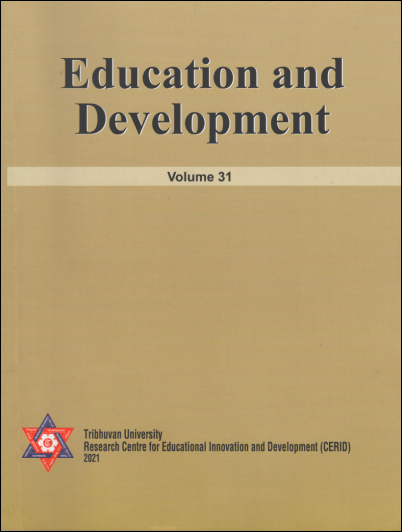Association Between Menstrual Hygiene Practice and Exposure to Risk of RH Problems among the Female Students of College Level in Surkhet
DOI:
https://doi.org/10.3126/ed.v31i01.62217Keywords:
Menstrual hygiene, menstruation, female students, health problems, relative riskAbstract
The goal of this cross-sectional study, carried out in two constituent campuses of Surkhet, was to explore an association between menstrual hygiene practice and exposure to RH risk among female students. Stratified sampling was applied to recruiting 282 female students for this study. For data collection, a self-administrative questionnaire was conducted. The majority of the respondents in this study were between the ages of 19 and 24, the upper-caste Hindus, married and unemployed. The study found that the average age of the menarche among rural and urban female students of the selected campuses was 13.73 years. It was found that many girls in rural campuses faced restrictions during menstruation. Disposable sanitary pads were commonly utilized by them. Reproductive health problems were more common among the female students in the urban campuses, including genital itching, urinary tract infections, and menstrual problems. The computed relative risk of restricting the practice, bathing once a day, and utilizing a sanitary disposal pad was less than 1, indicating that using a sanitary disposal pad minimizes the likelihood of RH problems. The results of the study indicated that those who change absorbents as needed and use homemade pads may have experienced RH problems. Deriving on the results of this study, it is suggested that research and advocacy regarding this issue be raised at campuses.
Downloads
Downloads
Published
How to Cite
Issue
Section
License
Copyright (c) 2021 The Author(s)

This work is licensed under a Creative Commons Attribution-NonCommercial 4.0 International License.
CC BY-NC 4.0. This license requires that reusers give credit to the creator. It allows reusers to distribute, remix, adapt, and build upon the material in any medium or format, for noncommercial purposes only.




